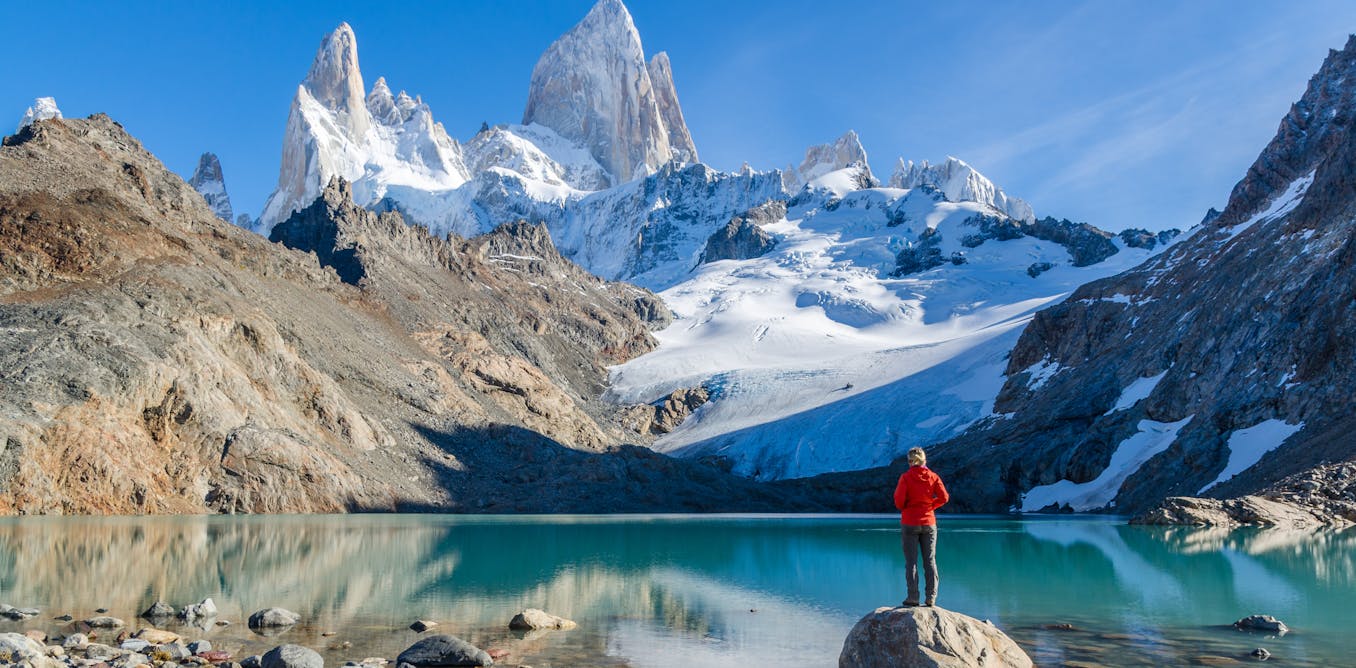If Patagonia’s business model is a paragon of virtue, should more companies follow suit?
“Buy Less; Choose Well; Make it Last” is a business philosophy long espoused by the doyenne of the British fashion industry, Vivienne Westwood. As a remedy to rampant consumerism and the throwaway culture of fast-fashion, a few clothing brands actively encourage their customers to buy less. But can buying less be good business?
The renowned, outdoor-lifestyle clothing brand Patagonia clearly thinks so. The origins of the brand lie in the entrepreneurial exploits of avid climber, Yvon Chouinard, who made specialised climbing equipment in his back yard. In particular, he made reusable pitons – the small spikes that climbers hammer into rock cracks to attach safety ropes – out of hard rather than soft steel. As demand grew, small-scale, hand-made, craft production eventually gave way to small-scale, mechanised production.
However, Chouinard soon recognised that his burgeoning success in producing high quality, reusable pitons had a downside. On a climbing trip he noticed that the constant hammering in and removal of the pitons was causing the environmental degradation of the very mountains that he and his friends loved. Despite being market leaders, Chouinard and his business partner decided to stop making pitons.
Today, Patagonia focus on clothing rather than equipment, but this story is retold on the Patagonia website as part of the brand’s mythology. The story also gets to the nub of the problem facing any brand that supports consumption activities that take place in nature: how do you enjoy nature without destroying it?
Cause no unnecessary harm
When we studied surfing culture, we identified what we called practices of redress. This means that companies like Patagonia are aware of the paradox implicit to their business, but rather than ignore it, they try to minimise their effects.
For Patagonia, redress is written into their mission statement: “Build the best product, cause no unnecessary harm, use business to inspire and implement solutions to the environmental crisis.” Practically, this translates into maintaining high ethical and environmental standards as a source of competitive advantage.
To this end, Patagonia engages in a range of innovative business programmes. Its Footprint Chronicles programme, for example, uses “transparency about our supply chain to help us reduce our adverse social and environmental impacts – and on an industrial scale”.

Patagonia
Harnessing technologies to develop new materials, and to recycle old materials is also fundamental to Patagonia’s production processes. Its wetsuits for surfing are made from Yulex a natural rubber produced from sustainable forests.
Its New Localism programme, is perhaps the most concrete example of redress: “We can no longer pass through or visit remote wild places and trust they will remain that way.” Patagonia supports a range of grassroots activists and campaigners in a range of environmental projects and, as such, is a member of another Chouinard initiative One Percent for the Planet.
Set against this range of sustainable, environmental and corporate social responsibility programmes, Patagonia’s Worn Wear programme represents an effort to tackle the throwaway culture. Patagonia’s aim is to produce well-made products that last a long time. Aside from repairing up to 40,000 items a year in its US factory, it is also committed to teaching people how to do repair jobs themselves, producing how-to guides for those of us who no longer know the basics of sewing.
As a company, Patagonia practices what it preaches. Its values guide product development, supply chain management and the way it treats its staff, too. Employees at Patagonia’s headquarters in Southern California head to the beach at lunchtime as part of the company’s forward-thinking flexitime policy.
This, of course, is reflected in its marketing. Brand ambassadors are shown striking out on adventures, confident in their equipment; tough, prepared and practical.
Patagonia turns over around US$600m a year selling a range of gear for climbing, surfing, fly-fishing, skiing and snowboarding. Clearly its values strike a chord with millions of consumers around the world. But what effect does this really have on the environment?
Cut from the same cloth
On the one hand, by educating its consumers to think, to reuse and to fix well-made stuff, Patagonia promotes its values as a political act of resistance against rampant consumerism: “Repair,” the CEO claims is “a radical act”. On the other hand, this might just be an effective way of positioning a brand to boost consumers’ sense of self-worth.
In reality, Patagonia is cut from the same cloth as many other premium brands. Vivienne Westwood and Aigle have sourced more “natural” materials for decades. Tricker’s and Barbour, like so many other heritage manufacturers, have always offered repair services.
Equally, each Patagonia product comes replete with brand associations that help its consumers to feel like an ethical adventurer, at one with nature. In this way Patagonia’s products add excitement to affluent, middle class consumers’ trips to the back country – or just the back garden.
What’s more, these issues are beyond one privately owned company’s control. Patagonia can only do so much to change cultural patterns of consumption. The opportunity, however, is to scale Patagonia’s success. That means other businesses adopting its ethical approach. And not just creating a compelling marketing strategy for its own consumers.
Hence, rather like the decision to give up making pitons, perhaps the final ascent that Patagonia now faces is the prospect of giving up its consumer-oriented strategies of differentiating itself from its competitors, and instead helping others adopt its innovative business programmes to make them the industry norm.
